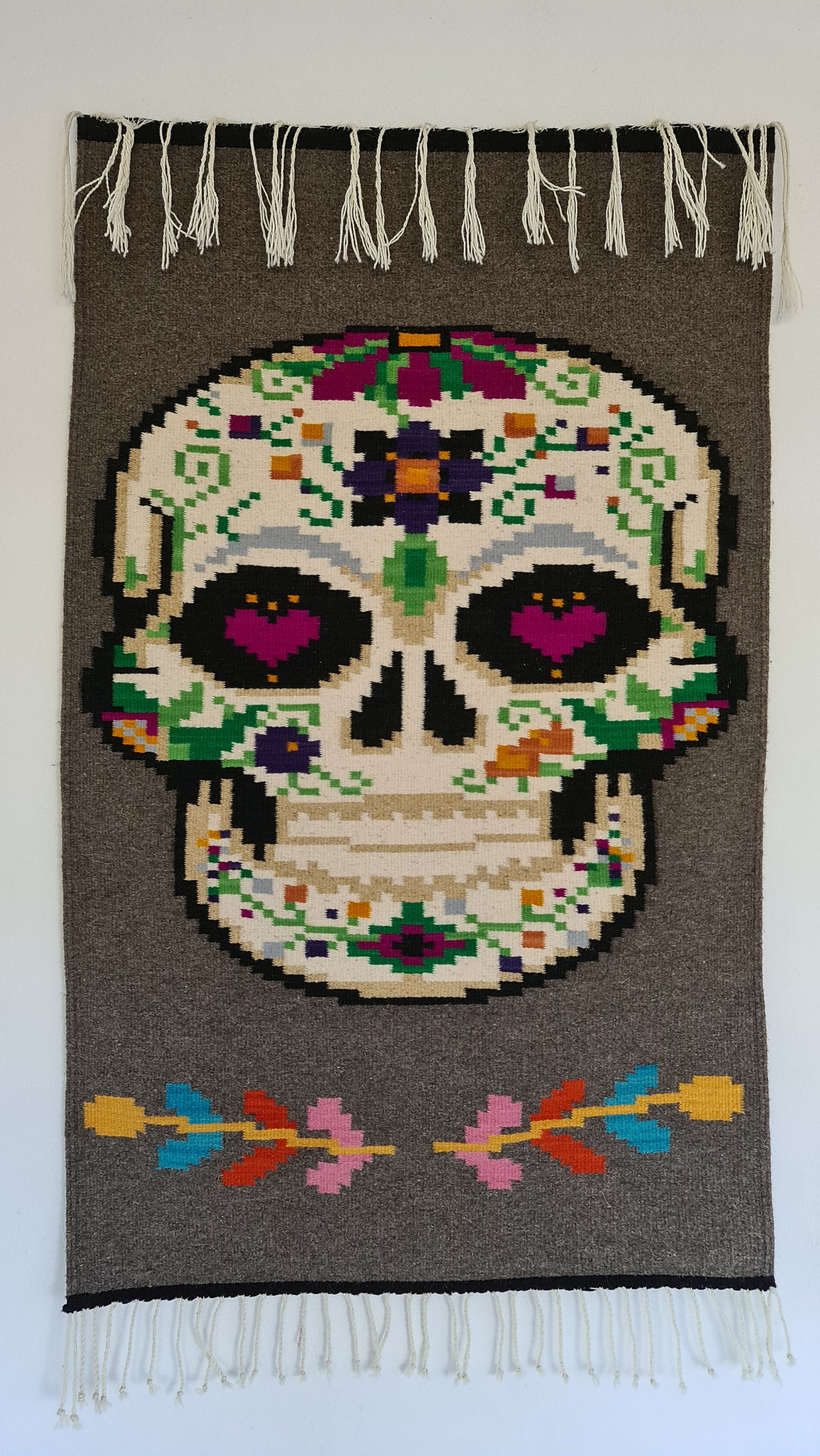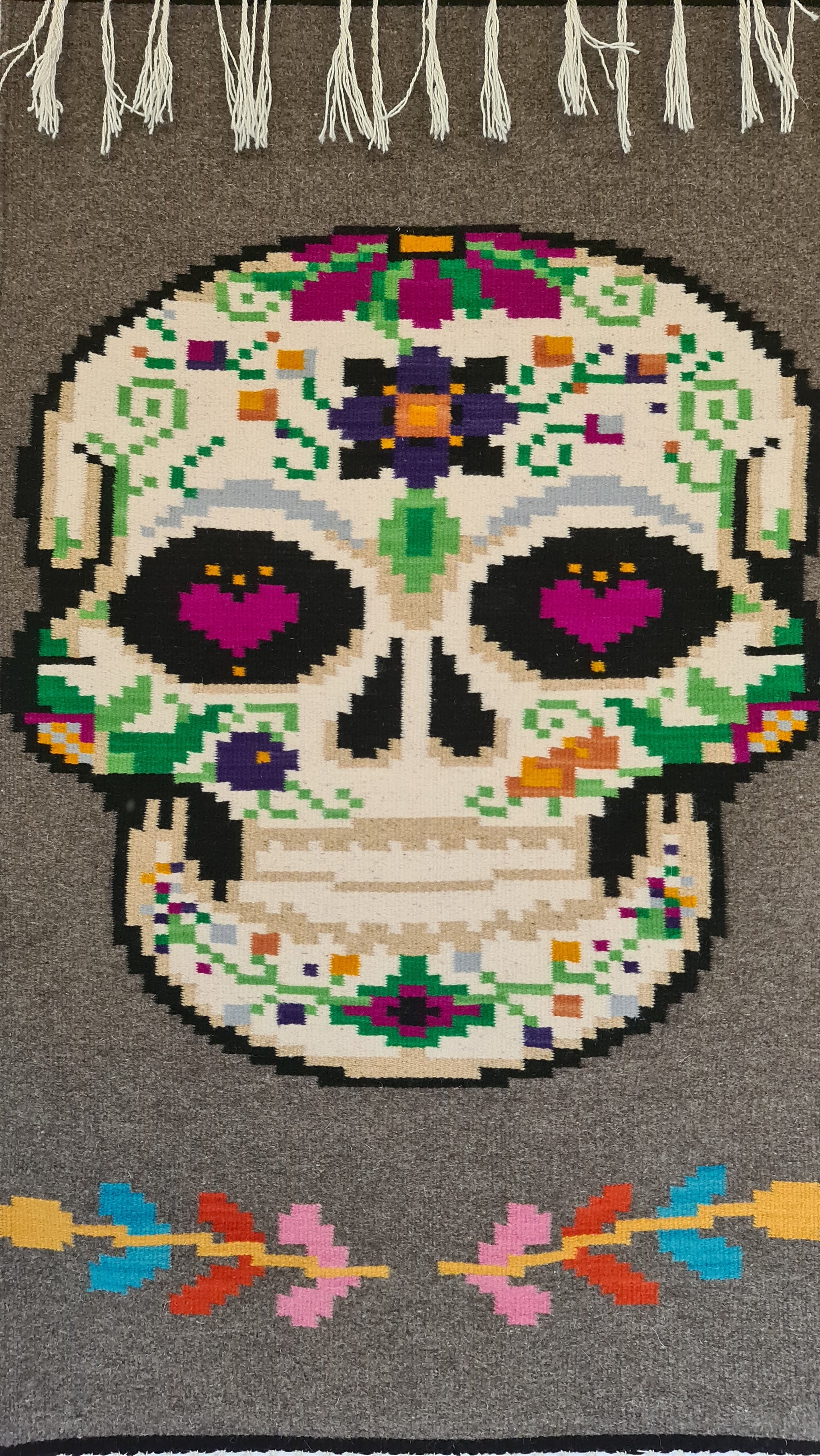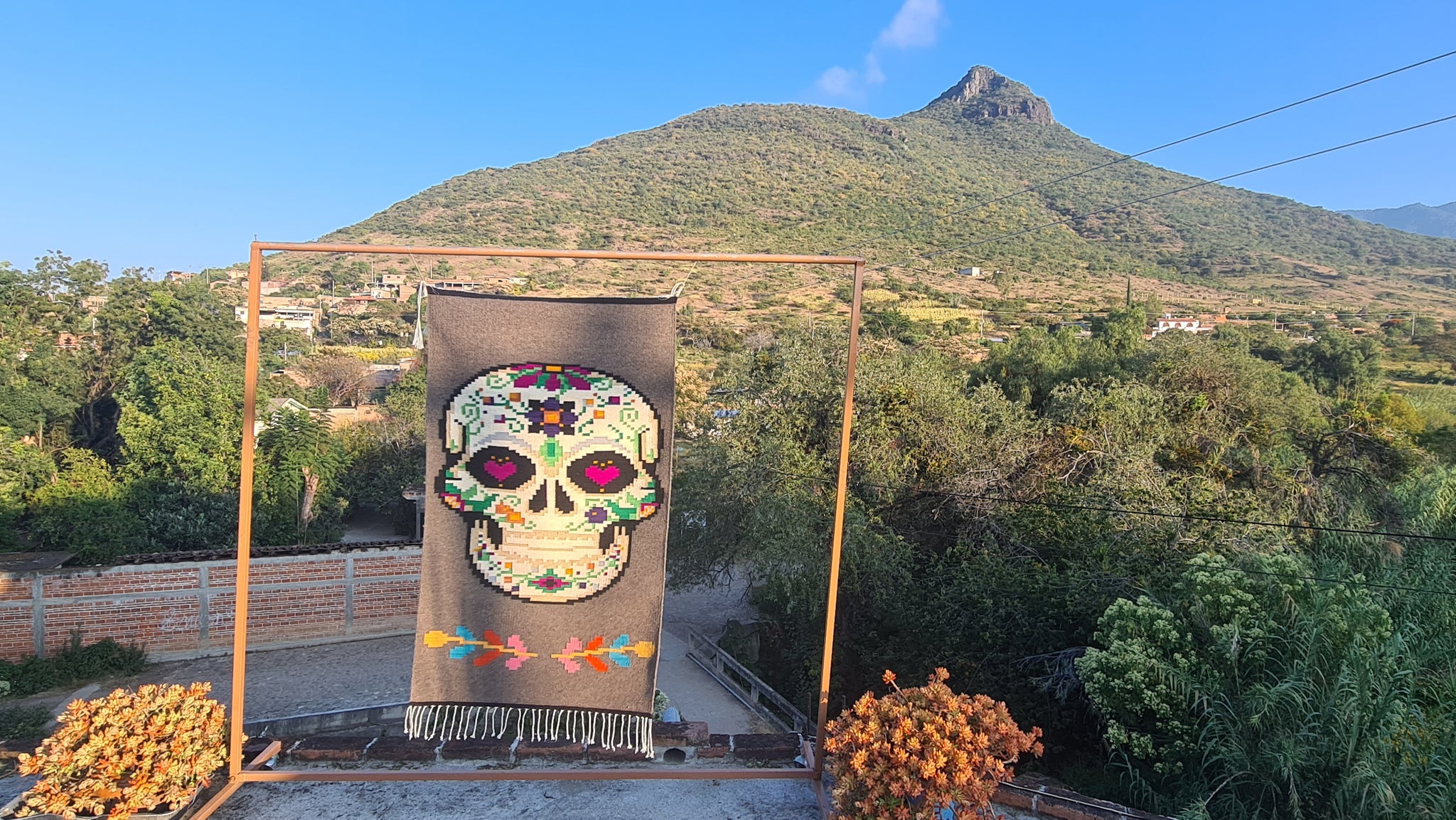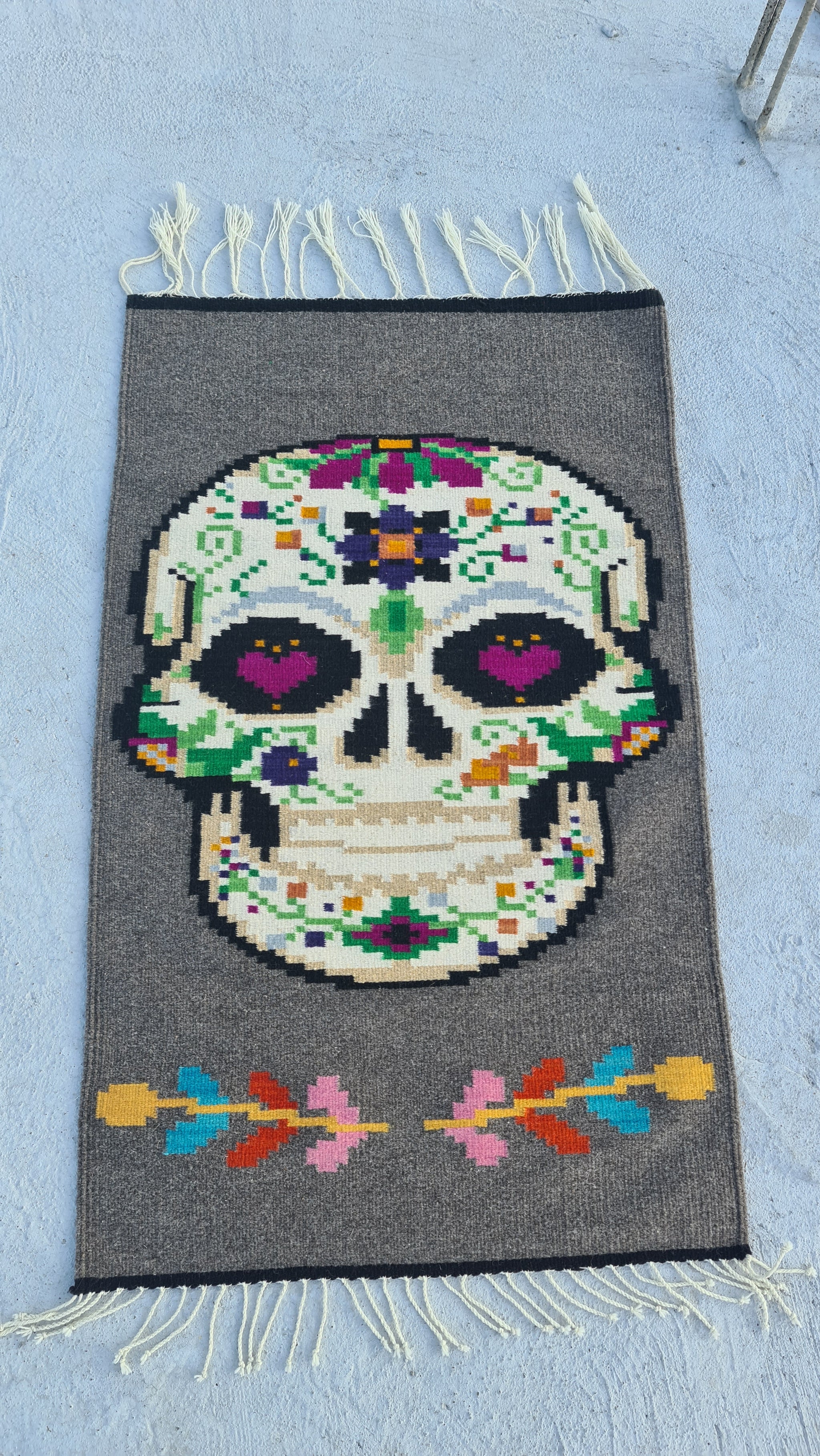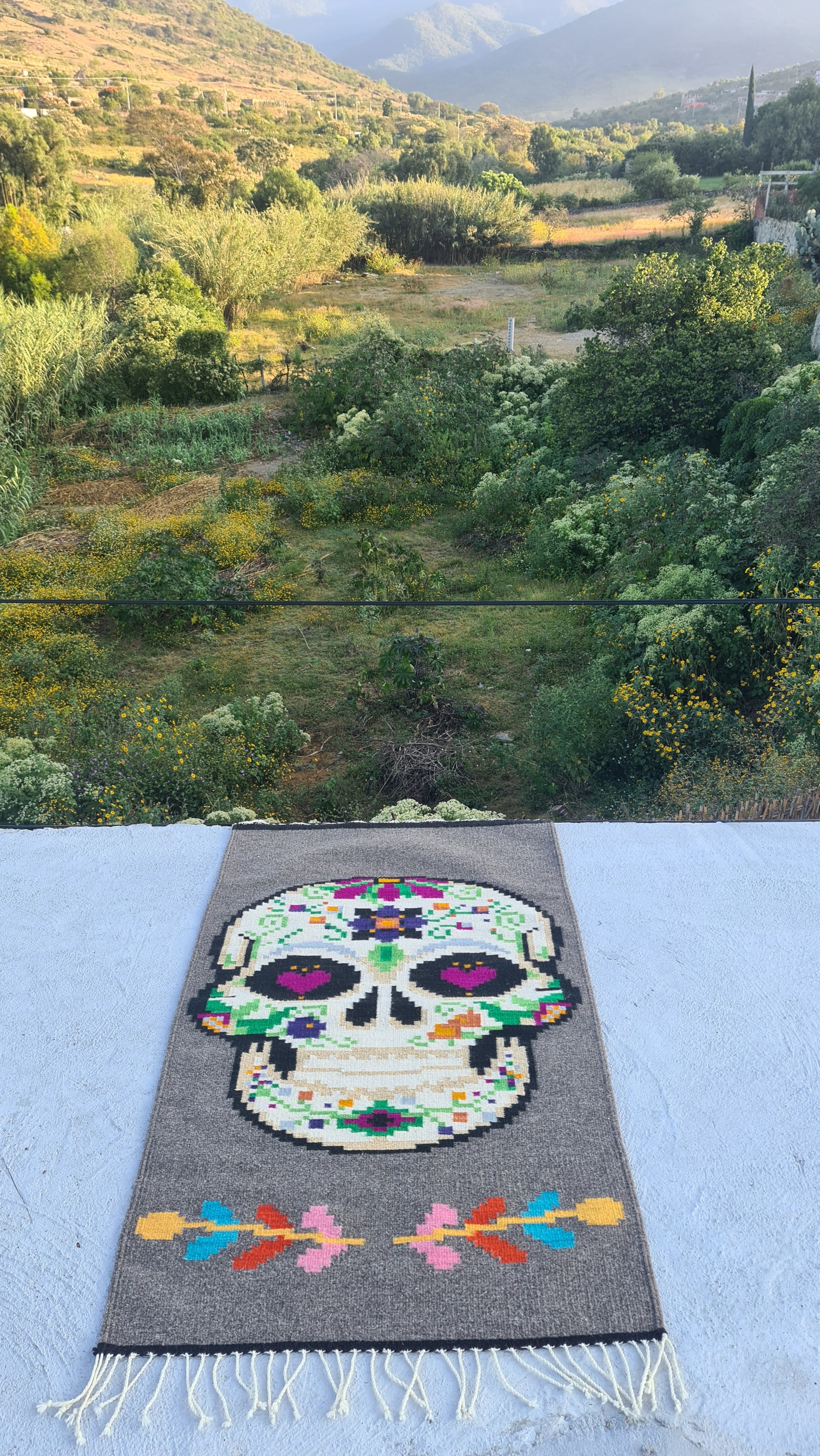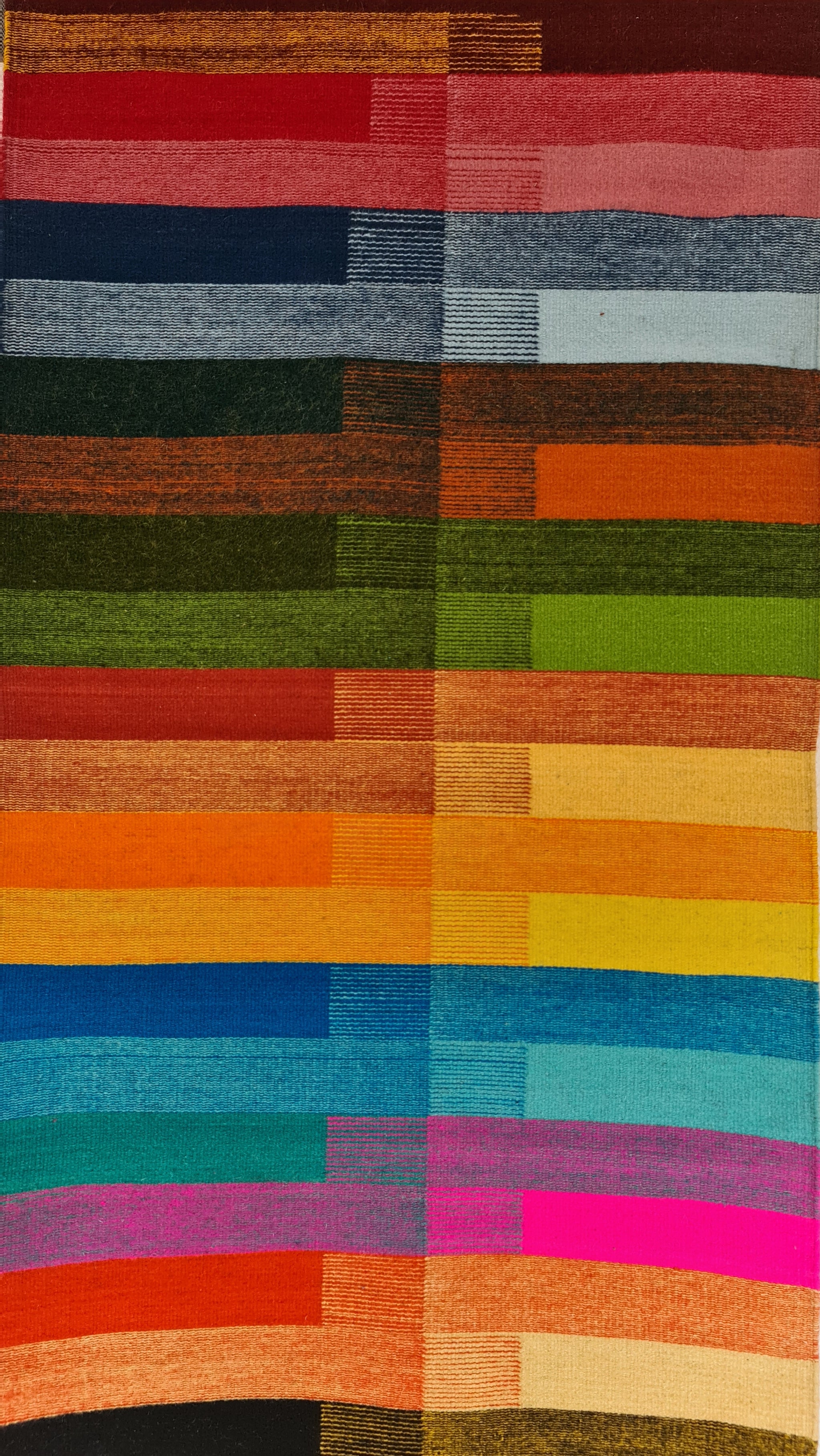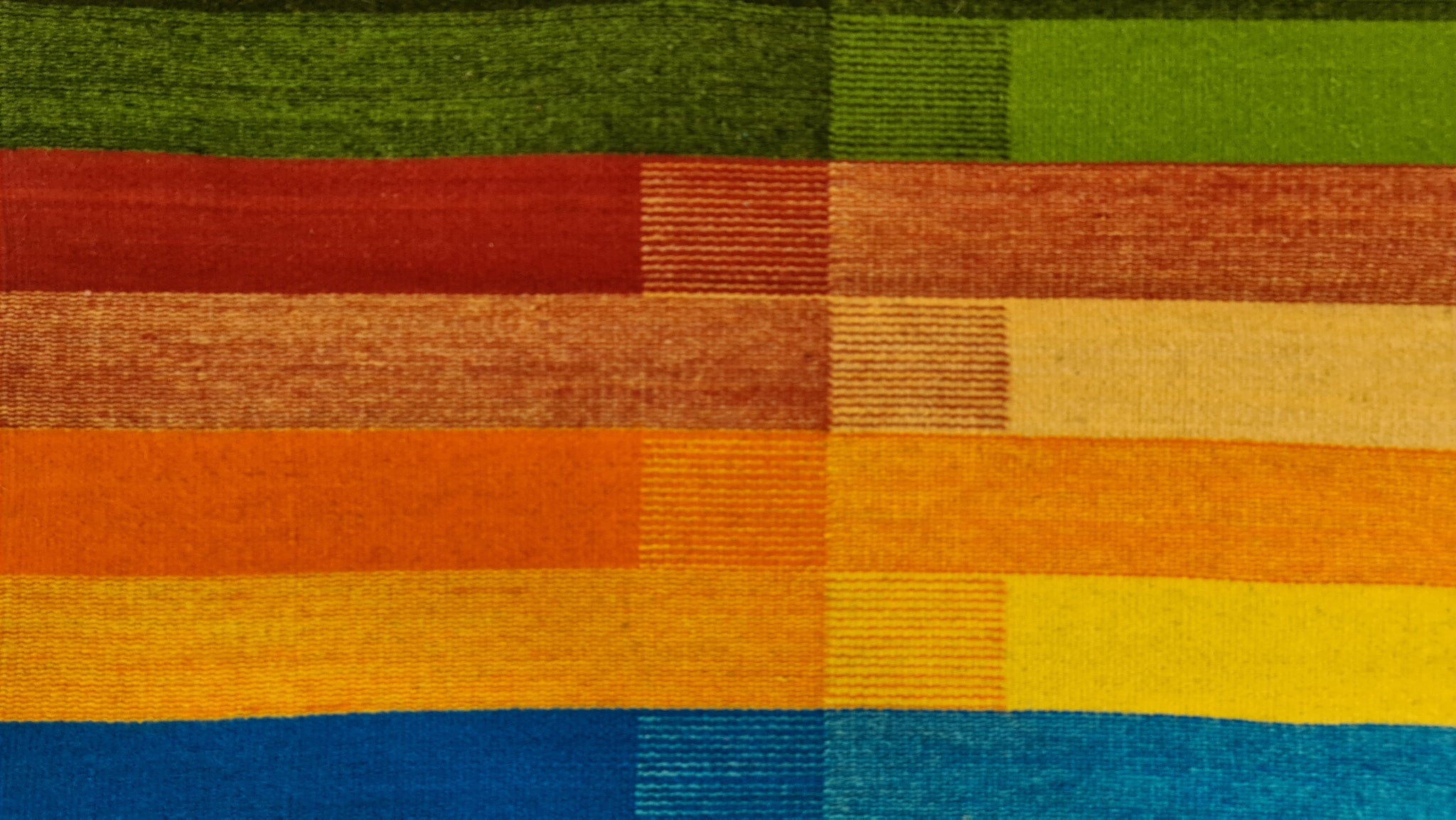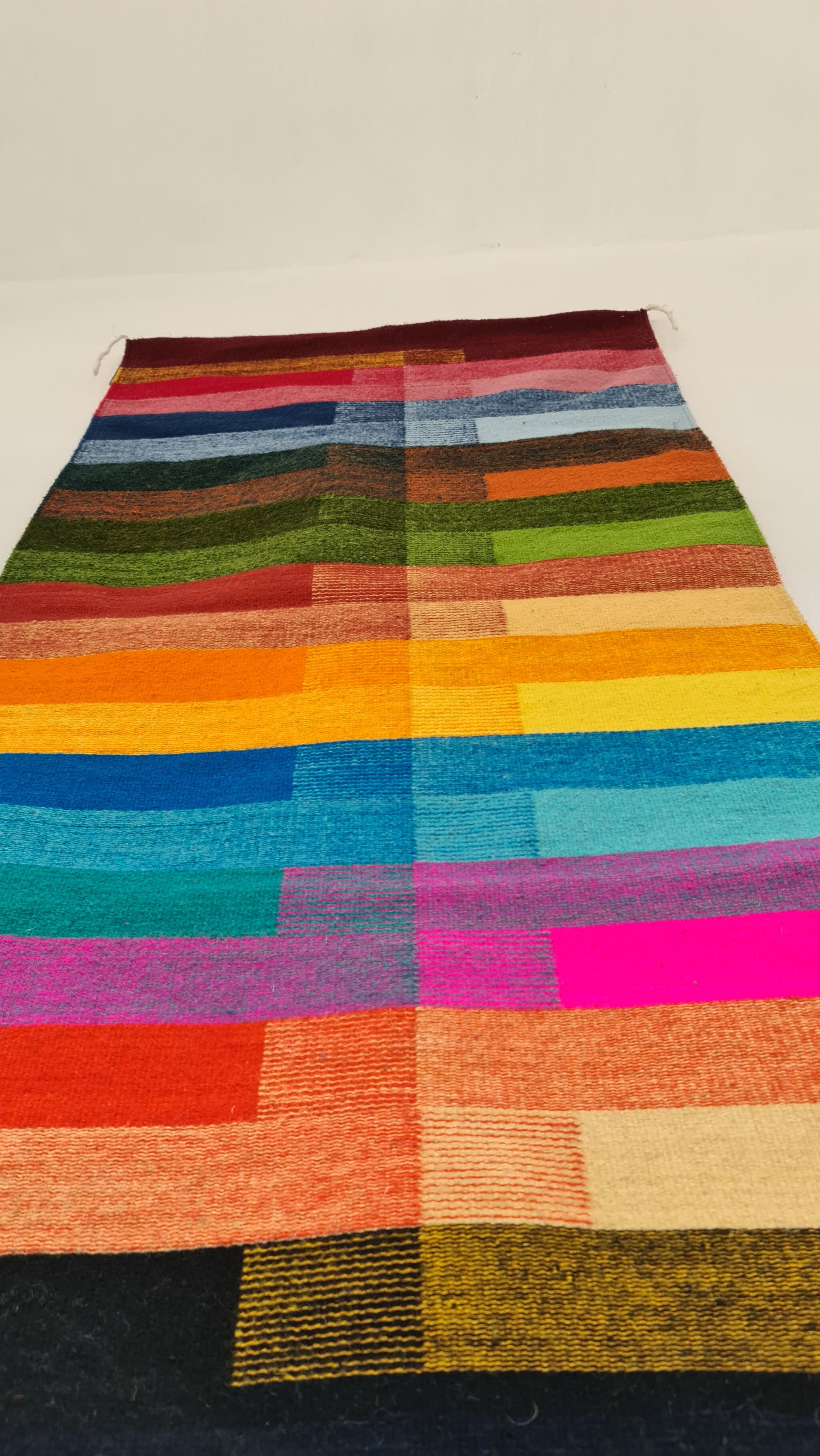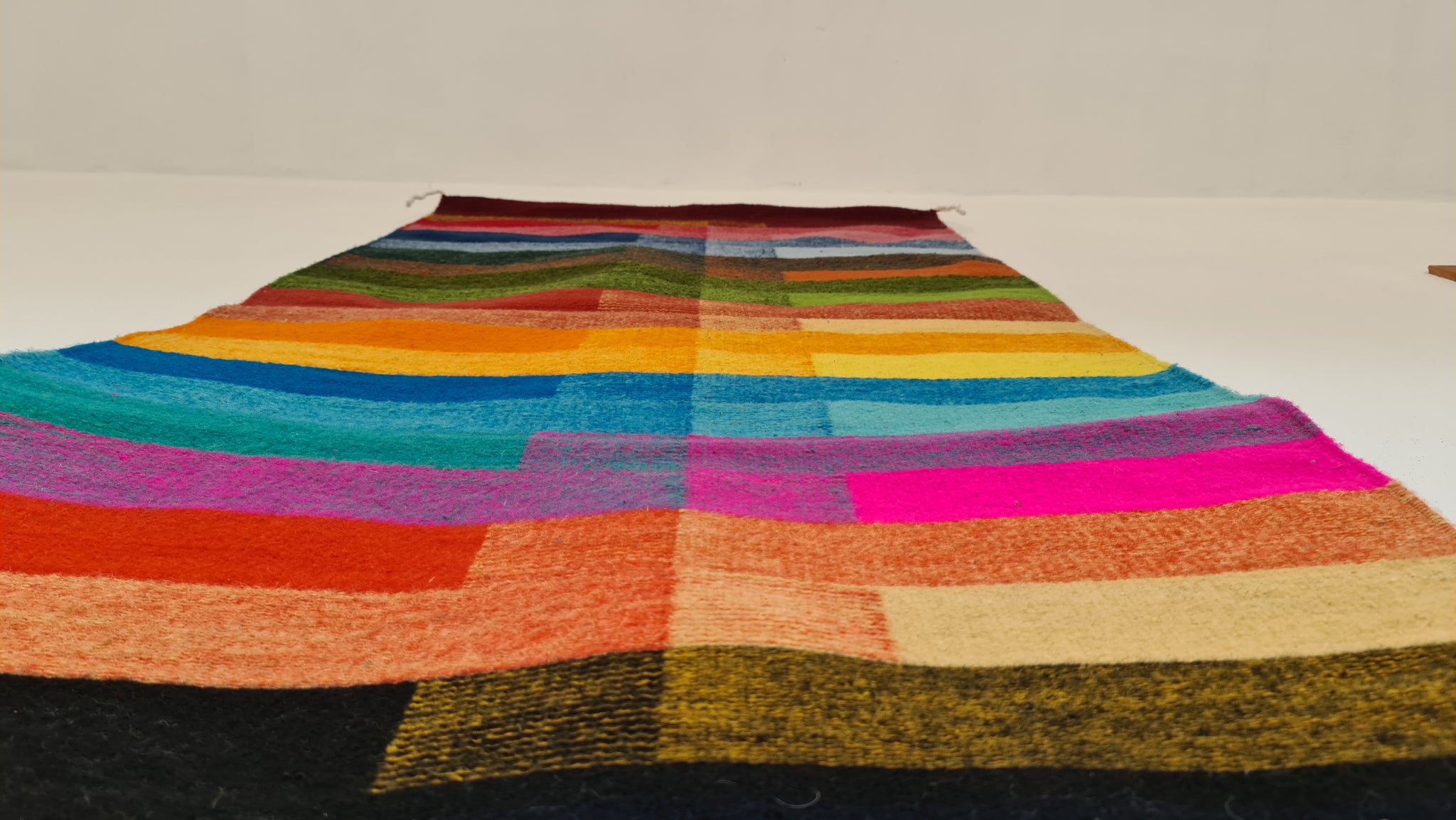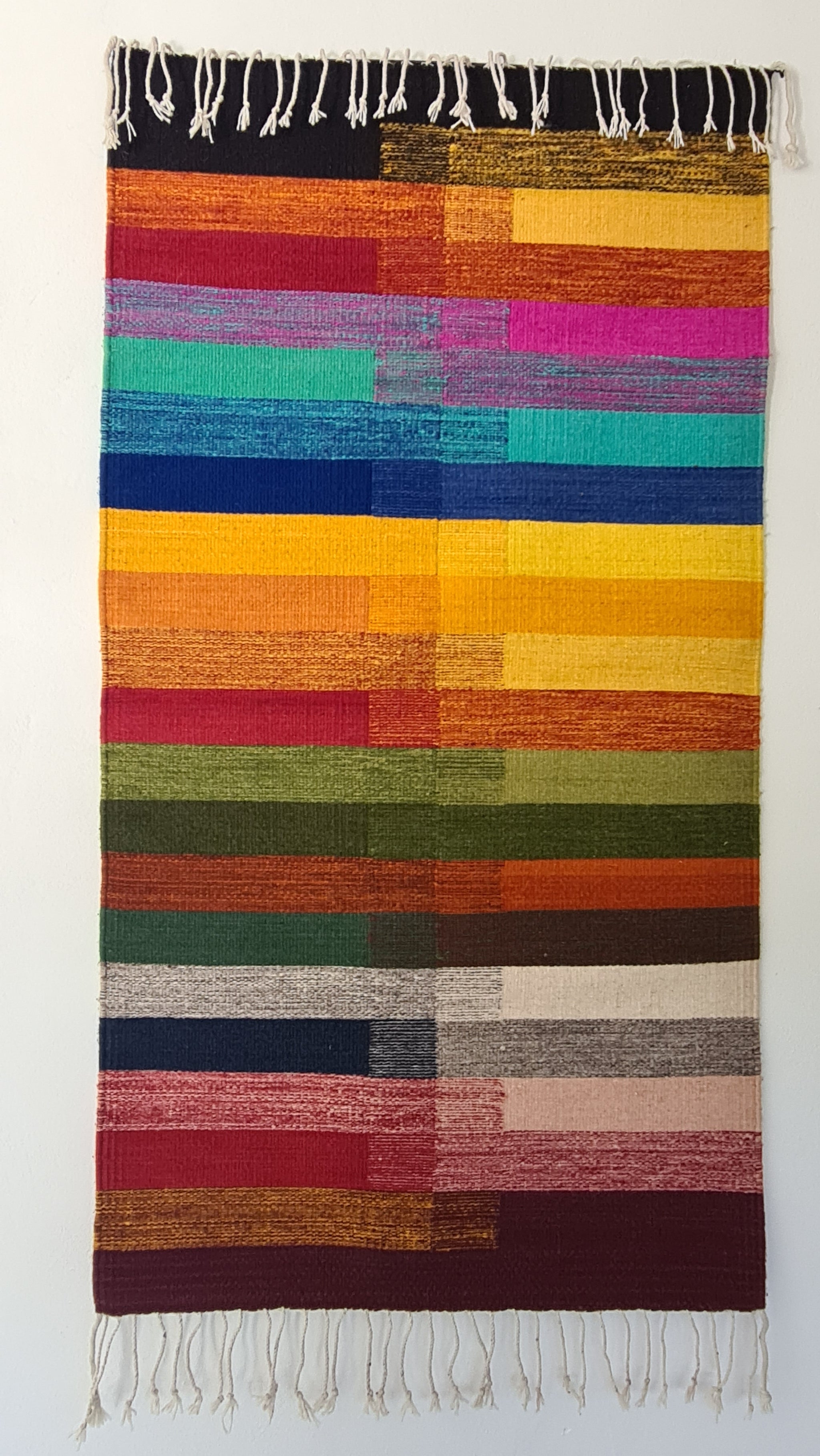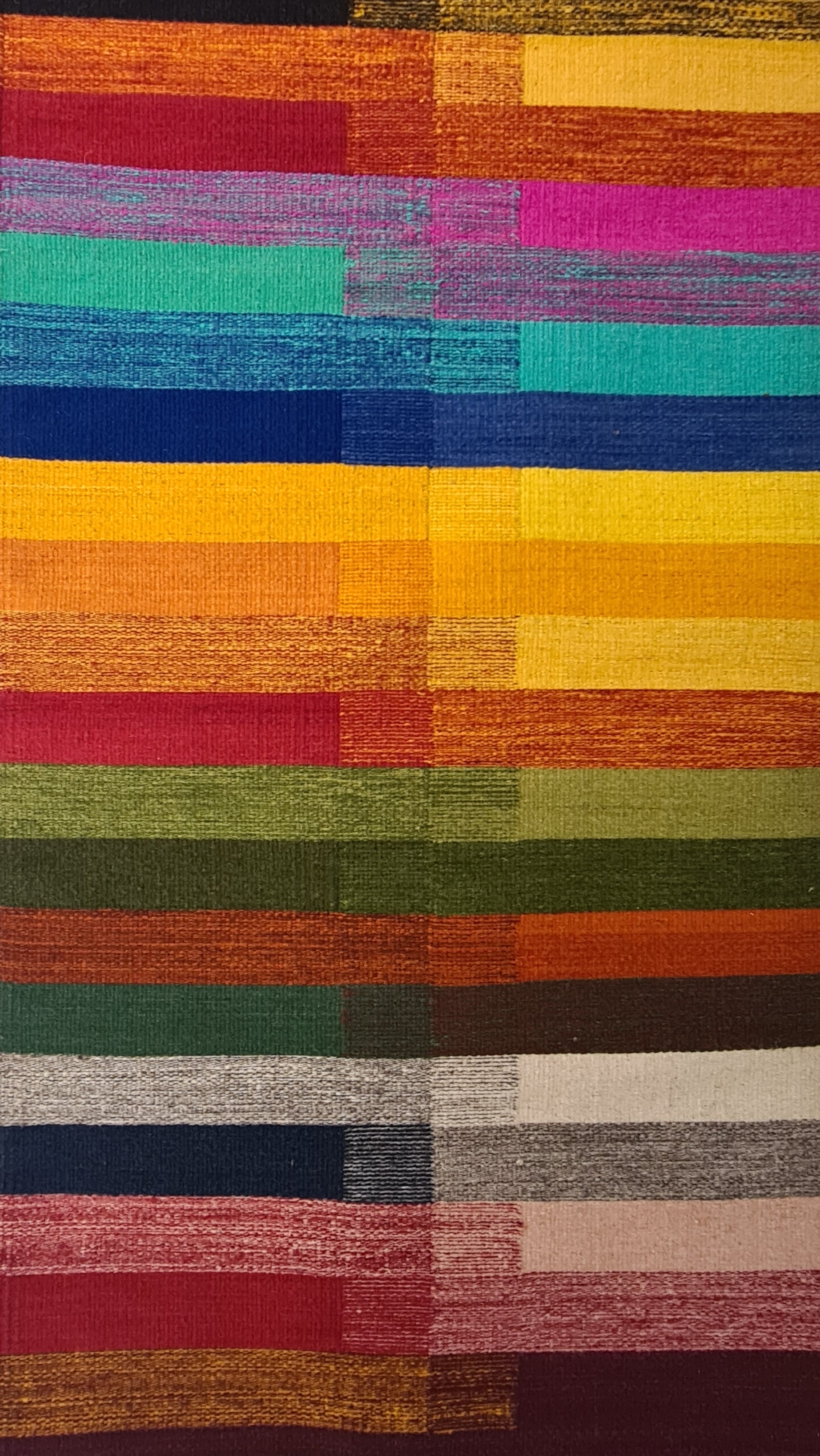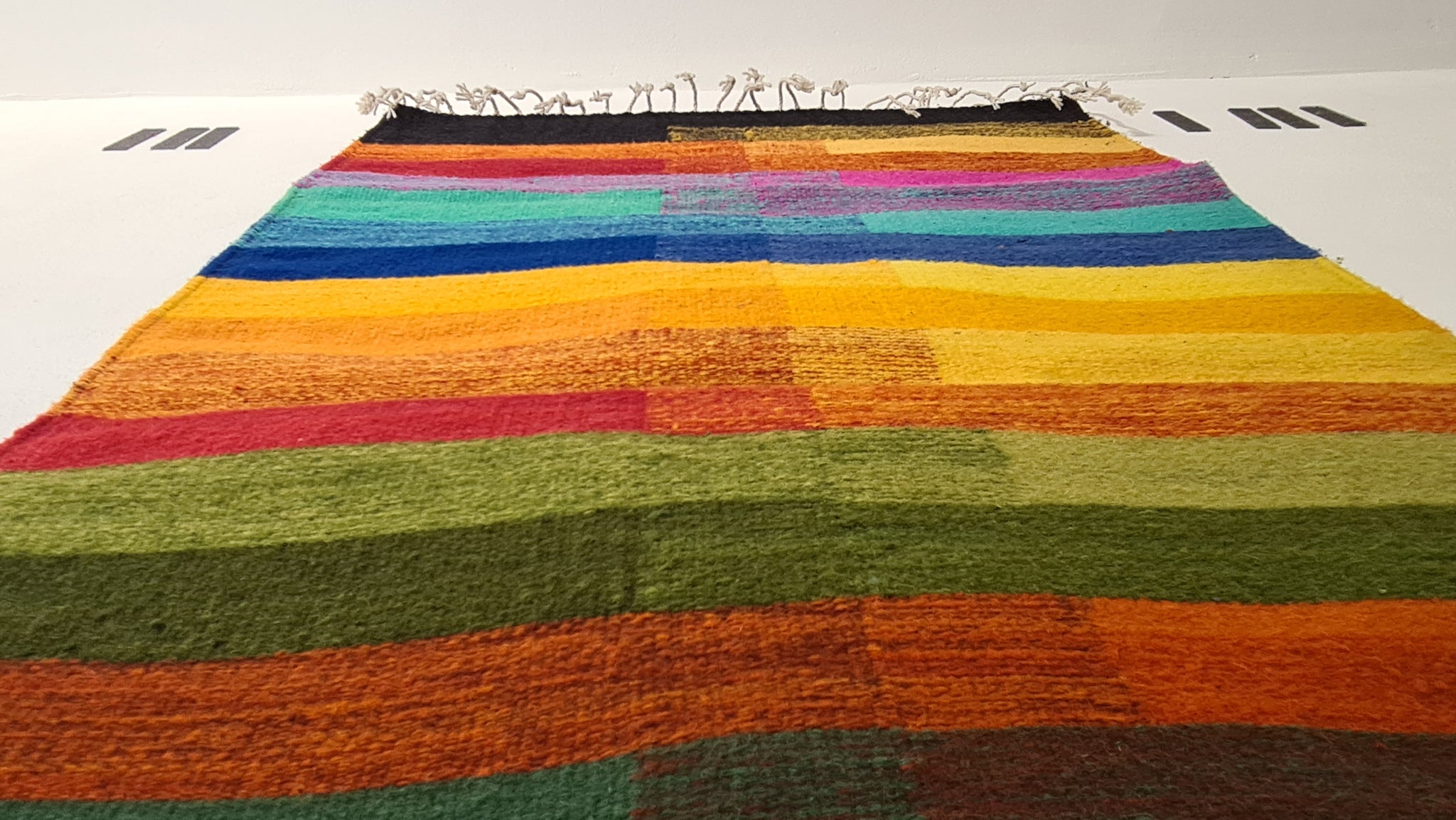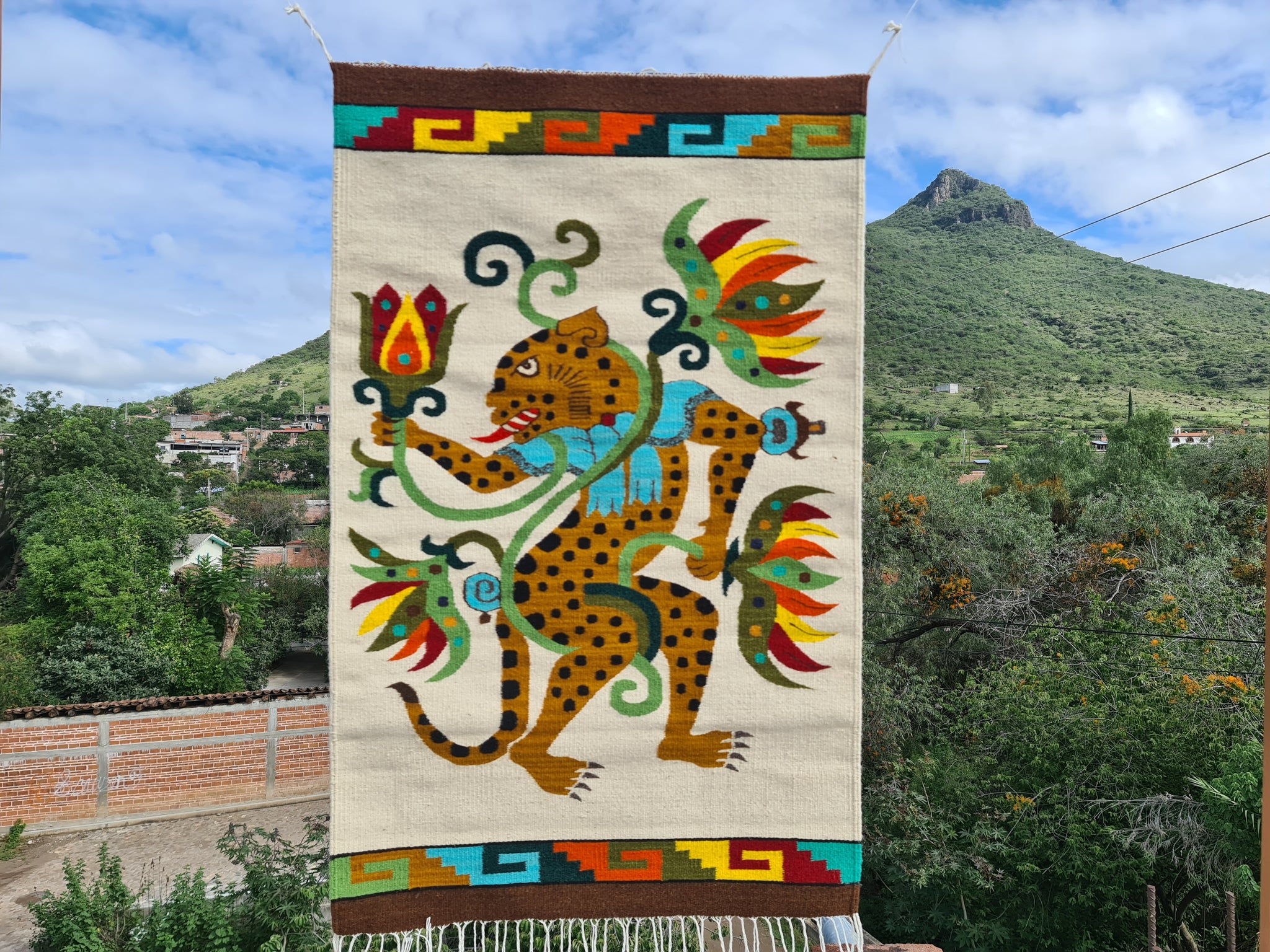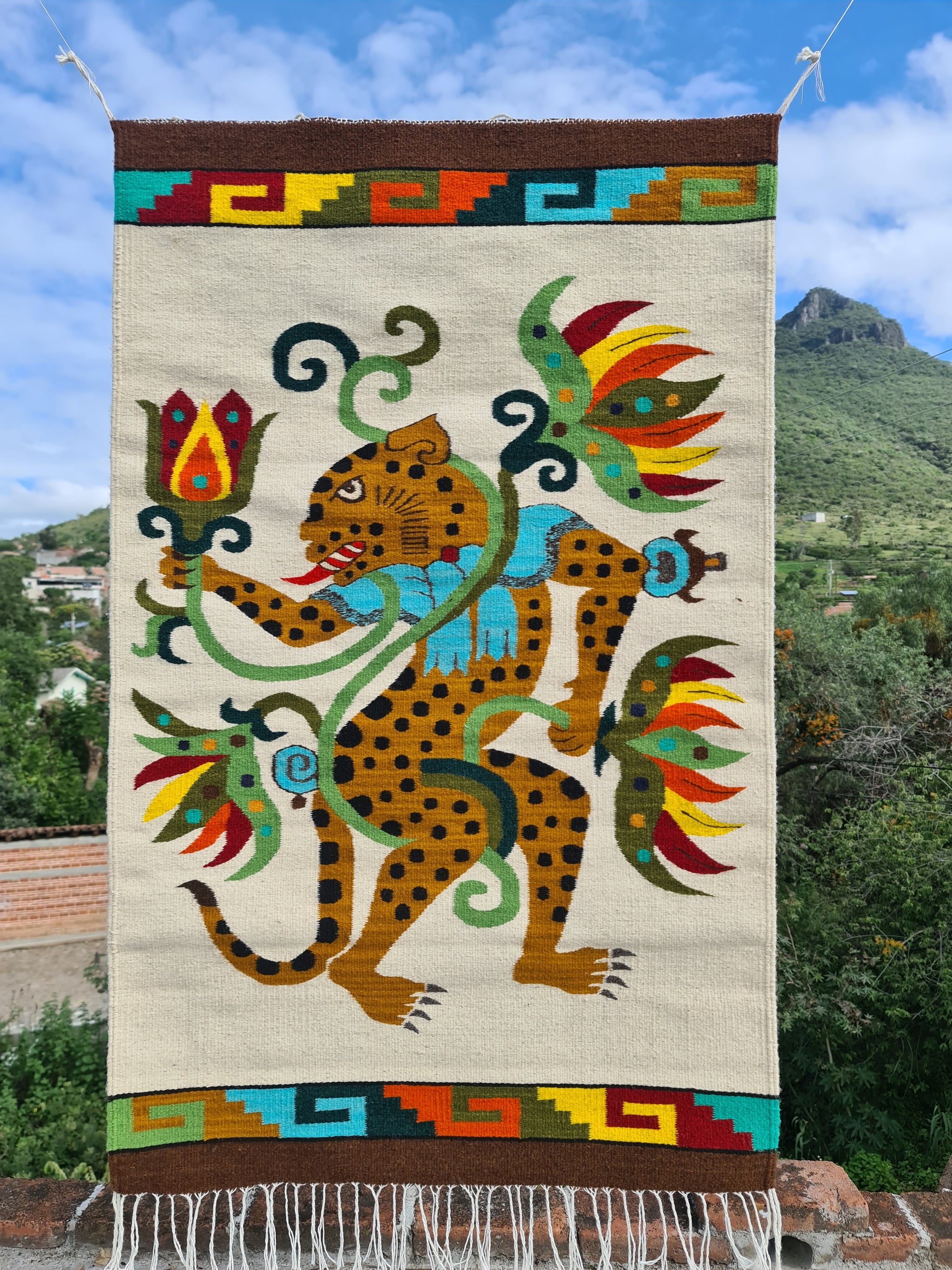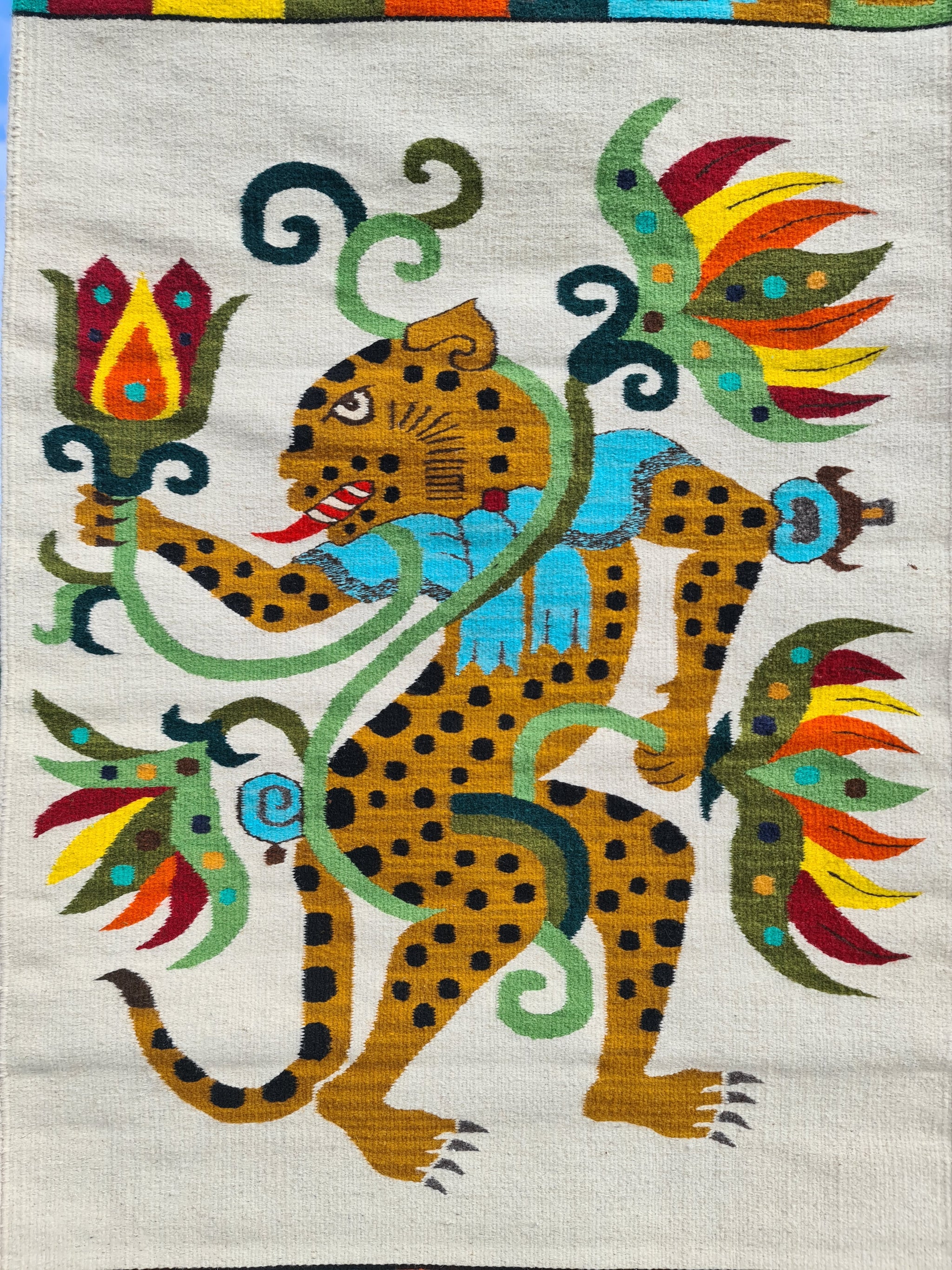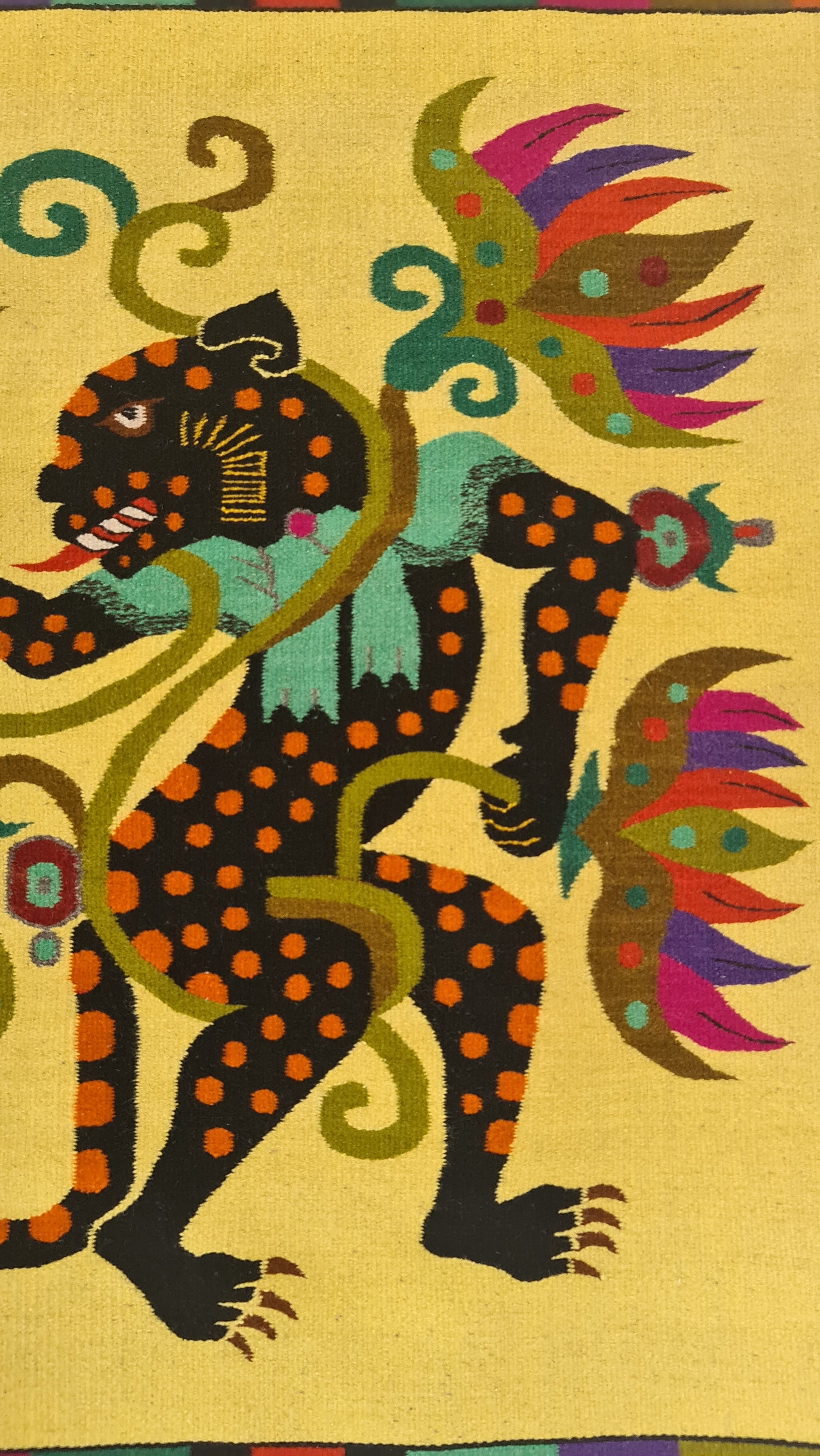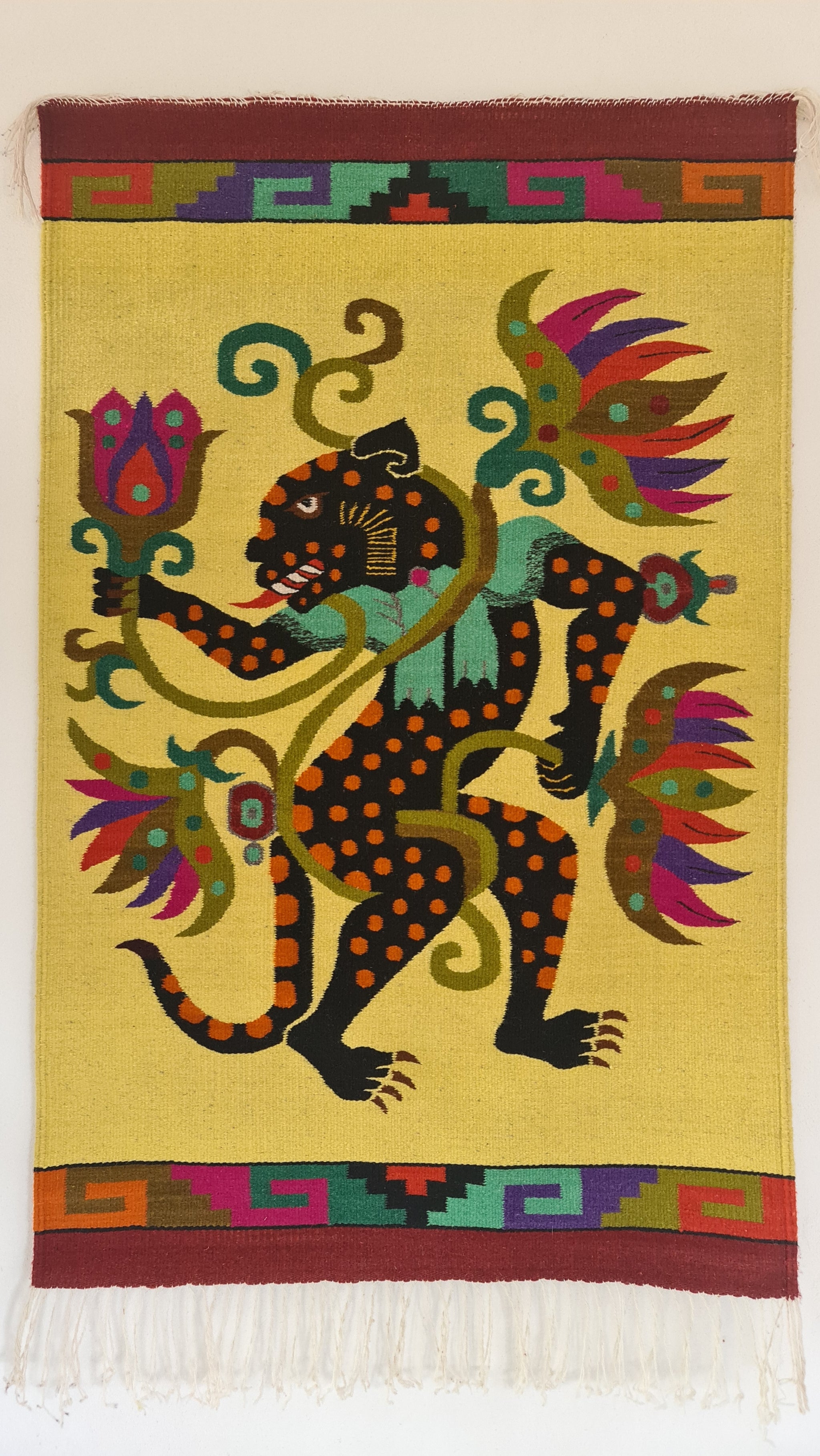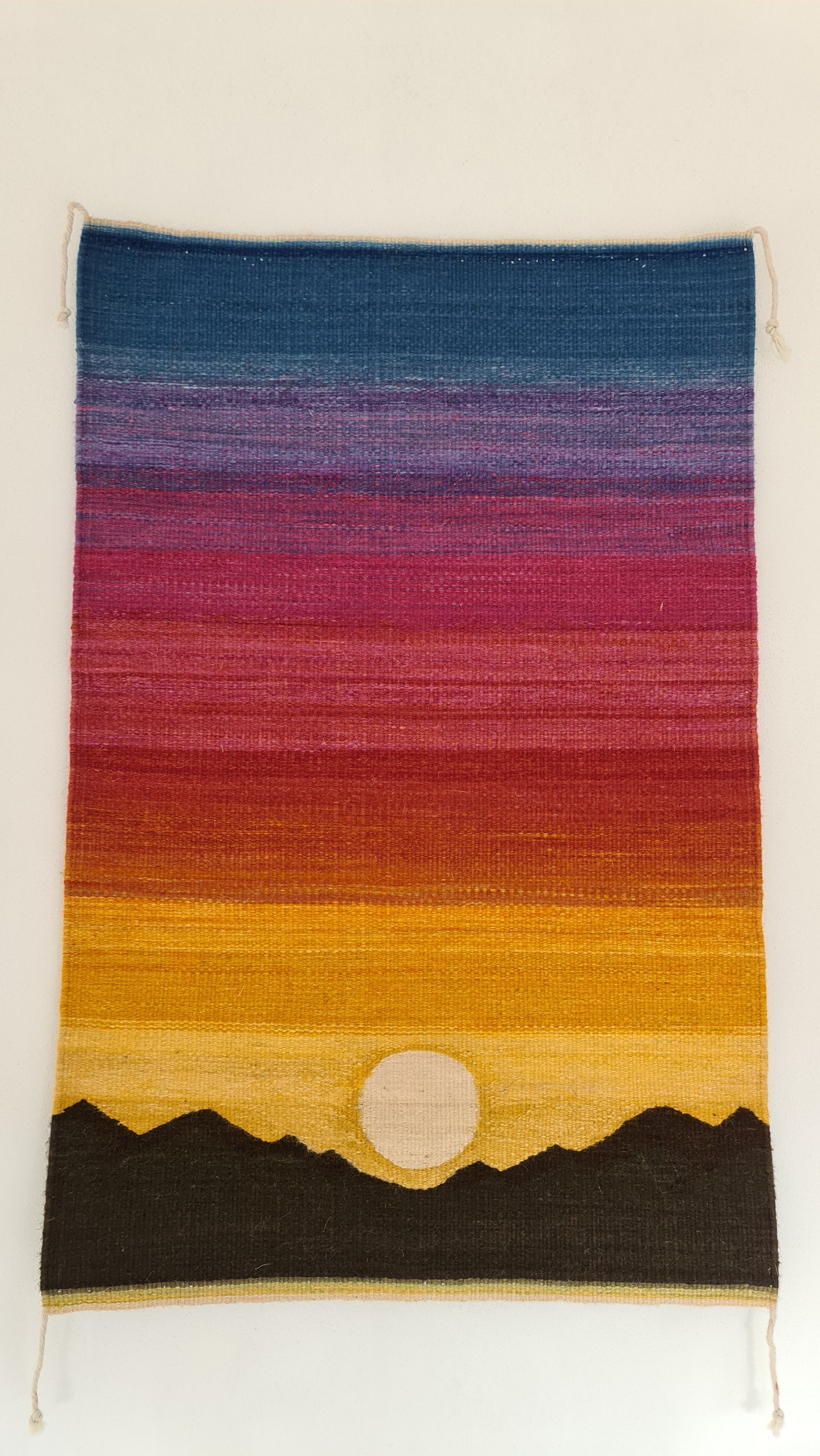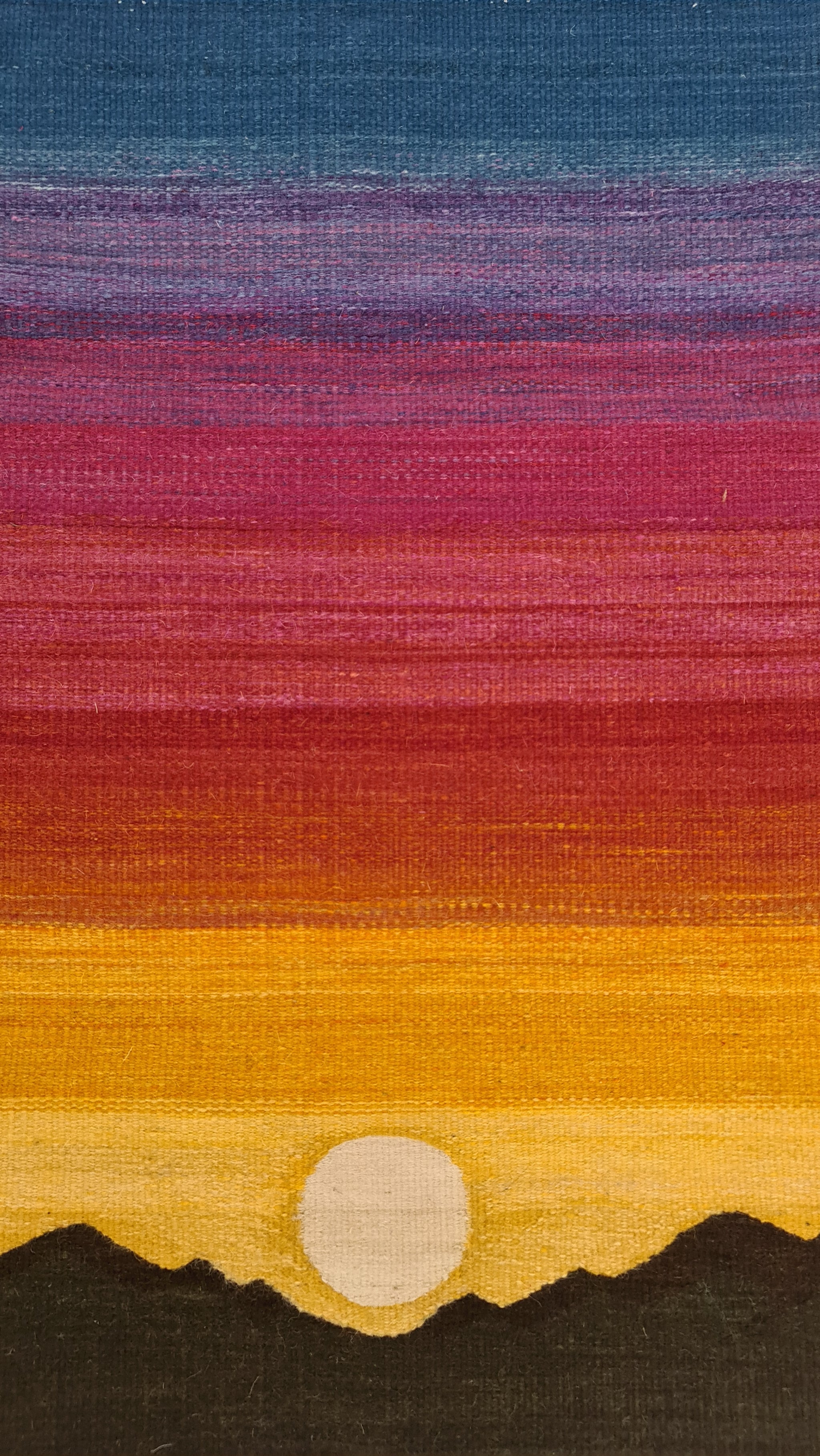Tuguúl
$ 15,000.00
Size: 80x140cm; 2.6x4.5ft
Materials ans methods: criollo sheep wool hand dyed with colorfast aniline dyes using an exhaustive method. Handwoven on a Zapotec style loom of the 16th century adapted from European styles. Woven using a 7 threads per inch reed.
Master weaver: Daniel Mendez Gómez
That time of the year when things start to die is approaching, the early flowers from the Guaje trees have fallen, the first flower blooms have turned into dry skeletal prickly seeds that stick to cloth, fur and the like. There has been a few rains now as the full moon is approaching, they could be the last rains of the year and will ensure that there is enough moisture in the ground for our corn to fill up with grain. The corn stalk is already drying and turning yellow. Our life cycle is no different than that, people in touch with their Rubeæz awareness (dreams and intuition) can feel when death is approaching, some of the famous curanderos for instance know excatly when their death will happen and make all the nesessary arrangement prior to it happening, they leave no threads untied.
My cousin Damiel Mendez wove this rug inspired in ancient depictions of skulls with flowers that symbolize the bloosoming of our consciousness. Just like the floweres are made from sunlight so are we and our spirtit yearns to return to that source of light, life and love.
Share:
Related Items
Yeéti: rainbow
$ 7,150.00
Size: 80x150cm Weavers: Francisca Hipólito Variant 1 Belen Bautista, Variant 2 Price: $350USD Materials and methods: criollo sheep wool hand dyed with colorfast aniline dyes using an exhaustive method. Handwoven...
Beaz guie'a: water lily Jaguar
$ 12,000.00
Size: 81x121cm; 32x47.6in Materials and methods: criollo sheep wool hand dyed with colorfast aniline dyes in exhaustive dye vat. This tapestry work was handwoven on a Zapotec walking loom of...
Kayuú gubish kieadain: sunset over the mountains
$ 8,000.00
Size: 60x100cm; 2.x3ftMaster Weaver: Justino Martínez MendozaPrice: 250USD Materials and methods: criollo sheep wool hand dyed with natural dyes: Beè (Dactylopius coccus Costa, cochineal), Zacatlaxcalli (Cuscuta Tinctorea) and Xiuhquilitl (indigofera suffroticosa) and...
